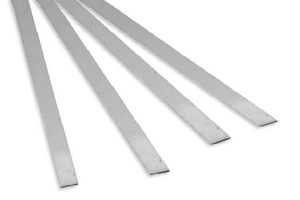
Bullion is at the heart of most jewellery making processes. If you want to use Silver, Gold or any other precious metals in your creations, it’s a good idea to become familiar with the bullion basics. Read on to find out what bullion is, the different types available and how to buy bullion.
What is bullion?
In its simplest form, any type of precious metal can be defined as bullion. And as standard, most bullion is recognised as being at least 99.5% pure. In a bar form, it is also often used as legal tender, frequently held as reserves by banks or investors. However, in the jewellery making world, there are many different types of bullion that can be used in your designs, which we’ll delve into for you next.
Bullion alloys
Our bullion guide below details all of the different types of alloys you can buy bullion in:
Sterling Silver
Argentium Silver
Fine Silver
Eco Silver
Britannia Silver
Yellow, White, Red and Green Gold, in 9ct, 14ct, 18ct and 22ct
Platinum
Palladium
Copper
Aluminium
Brass
Bullion basics
So, what is bullion used for? Below is a list of the most popular forms in which you can buy the different alloys (Silver, Gold, Brass etc.) and how you can use them:
1. Wire
An essential component of any jeweller’s kit, wire can be found in a number of different alloys, shapes and dimensions. Popular shapes are round, square, rectangular and D-shape. Find out more about the basics of jewellery making wire for a deeper dive into these bullion basics..
2. Sheet
A versatile product, sheet metal can be used in various ways. It can be cut down to your exact requirements, bent to form rings and bangles or textured to create unique pendants and charms. For more on how to use sheet metal in your designs, read our blog on how to work with sheet metal.
3. Solder
Solder is also considered one of the most essential types of bullion within jewellery making. Most projects require some form of solder to ensure it is completed to the best standard. Much like the above, there are different kinds of solder to choose from. When it comes to bullion basics, a key piece of advice is to match the alloy to your design as closely as possible. For more information on getting to grips with solder, check out our soldering tutorial round up for beginners.
4. Grain and casting pieces
Grain and casting pieces are used mostly by highly experienced jewellers. Its primary use is for casting jewellery with moulds or by using the lost wax carving technique. If you’d like to learn more about this, refer to our What is the lost wax casting process? blog.
How to buy bullion
The first step to buying bullion for your project, is identifying which kind of bullion you think you’ll need for your piece. If you want to try your hand at making a ring, you’ll most likely need some sheet metal and solder. Looking to create your own stone settings? Pick up a range of different kinds of wire and solder so you’re all set to design exactly what you want.
Where to buy bullion
Wondering where to buy bullion that’s high-quality and dependable? Whether you’re looking for some bullion basics to create new jewellery, or want to buy gold bars as an investment, buying bullion is easy with Cooksongold. As the leading bullion dealer and jewellery supplies specialist in the UK, we’ve got the biggest selection for you to choose from.

Cooksongold
